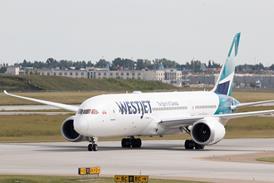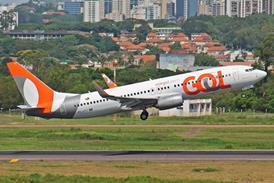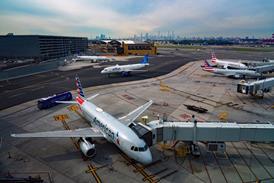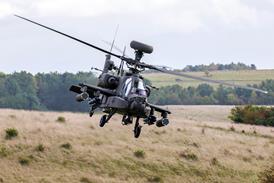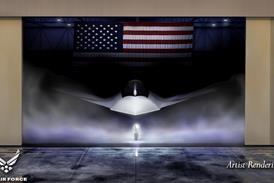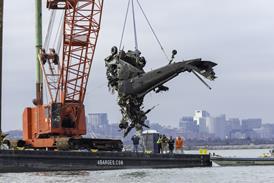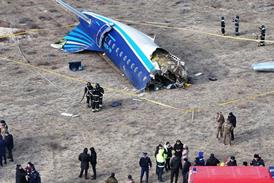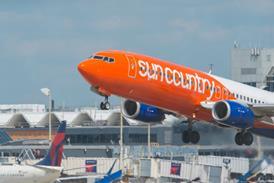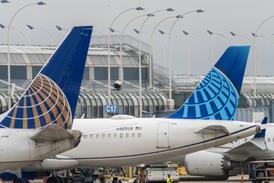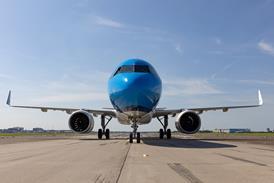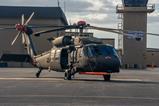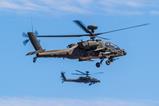The next-generation tiltrotor being developed by Bell for the US Army finally has name.
Speaking at the annual Army Aviation Association of America conference in Nashville, Tennessee on 14 May, the service’s number two officer confirmed the new rotorcraft will be designated the MV-75 when it enters service.
“It’s a leap ahead in technology and capability,” says General James Mingus, army vice chief of staff, of the MV-75.
“It delivers operational reach that alters how we close with the enemy,” he adds. “It brings the right combination of speed, payload and survivability we’ve never had in one aircraft.”
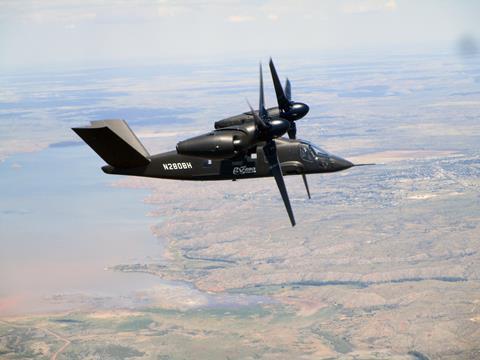
Until now, the new tiltrotor had only been known by its acquisition programme moniker, the Future Long-Range Assault Aircraft (FLRAA).
Bell had marketed the design as the V-280 Valor during the competitive development phase of the FLRAA programme, but dropped that label after the tiltrotor was selected as the army’s winner.
Mingus says the first frontline army unit to receive the MV-75 will be the storied 101st Airborne Division, which parachuted into Normandy during the Second World War. The division exchanged its parachutes for assault helicopters in 1968 during the Vietnam War.
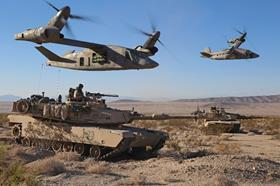
“The 101st flies into real world contested environments, across wide terrain, often without the luxury of fixed support infrastructure,” Mingus notes. “They need speed, endurance and reliability.”
Initially envisioned as a successor to the Sikorsky UH-60M Black Hawk, the army is now positioning the MV-75 as an aircraft that will supplement its existing aviation fleet.
The army now plans to simultaneously operate both the Black Hawk and the MV-75 for several decades, as it rolls out the new tiltrotor fleet.
“FLRAA is not a replacement in the conventional sense,” Mingus says.
For the FLRAA programme, competitors were required to demonstrate a one-way, unrefuelled flight range of 2,440nm (4,520km) and continuous cruise speeds of at least 280kt (518km/h).
Bell is currently under contract to deliver six prototype aircraft, with the company projecting it will complete first flight in 2026. The army hopes to launch its own MV-75 flight testing by 2027 or 2028, with operationally configured tiltrotors reaching the force by 2030.
The army is conducting a major restructuring that will see significant cuts to its legacy rotary-wing fleet. Known as the Army Transformation Initiative, the plan will see service divest all D-model Boeing AH-64 attack helicopters and cut 11 air cavalry scout squadrons and two reserve aviation brigades.
Those moves come a year after the service cancelled development of a next-generation armed scout helicopter known as the Future Attack Reconnaissance Aircraft.
Despite those reductions, Mingus says the army is “100% committed” to the FLRAA programme and fielding the MV-75.
“Not just committed to the programme, but how do we do it faster as well,” the four-star general notes.
The broader transformation also involves development of a new training platform to replace the current Airbus Helicopters UH-72A Lakota, which army leaders say has too many automated features to make it ideal for training new pilots.
“A lot of what I’m hearing is: they’re great system operators, but they don’t know how to fly the aircraft,” says Major General Clair Gill, the army’s top aviation officer.
“We took a very sophisticated aircraft that almost flies itself and used that to train basic pilot skills,” adds Mingus.
Though the army is just beginning the process of organising a competitive selection process to field a new trainer, Mingus says the service has certain requirements in mind.
“We want to go to a simple, single engine, basic helicopter,” he notes. “We want [pilots] to be masters of their craft of being able to fly a helicopter in the old fashioned way, so that all that becomes instinctual.”
That renewed focus on basic competencies comes as the army is expanding its use of autonomous and semi-autonomous flight technology, including onboard the MV-75.
“The army wants to make sure that aircraft can be unmanned,” Textron chief executive Scott Donnelly said in an April earnings call.
Textron is the parent company of FLRAA developer Bell.
Bell previously demonstrated such a capability with the V-280 competitive prototype in 2020.


